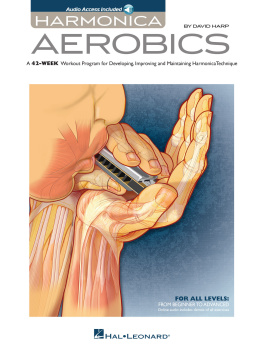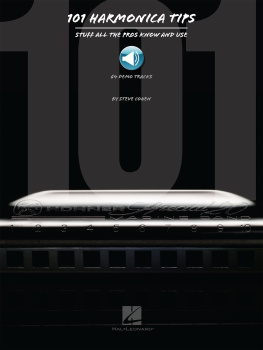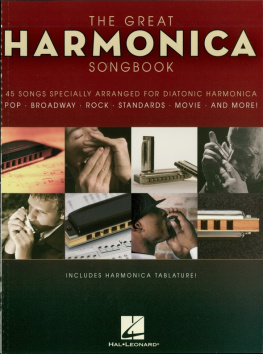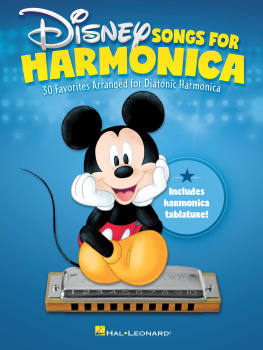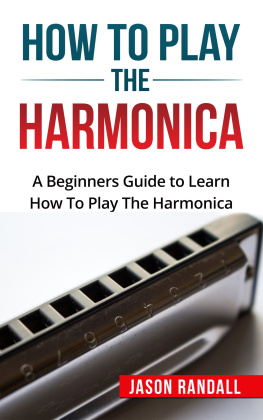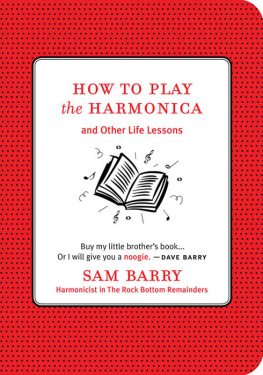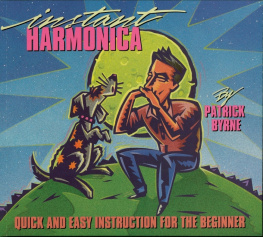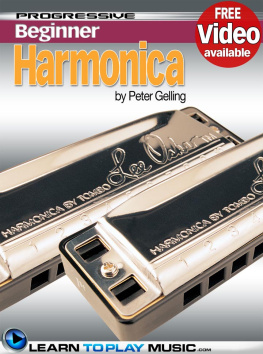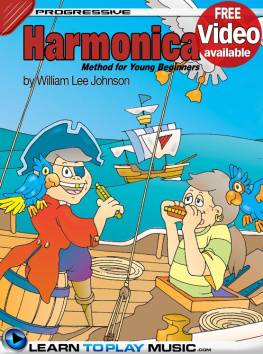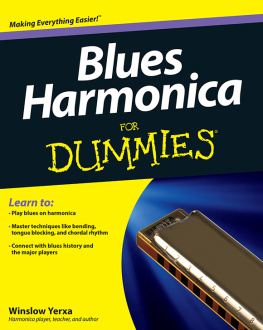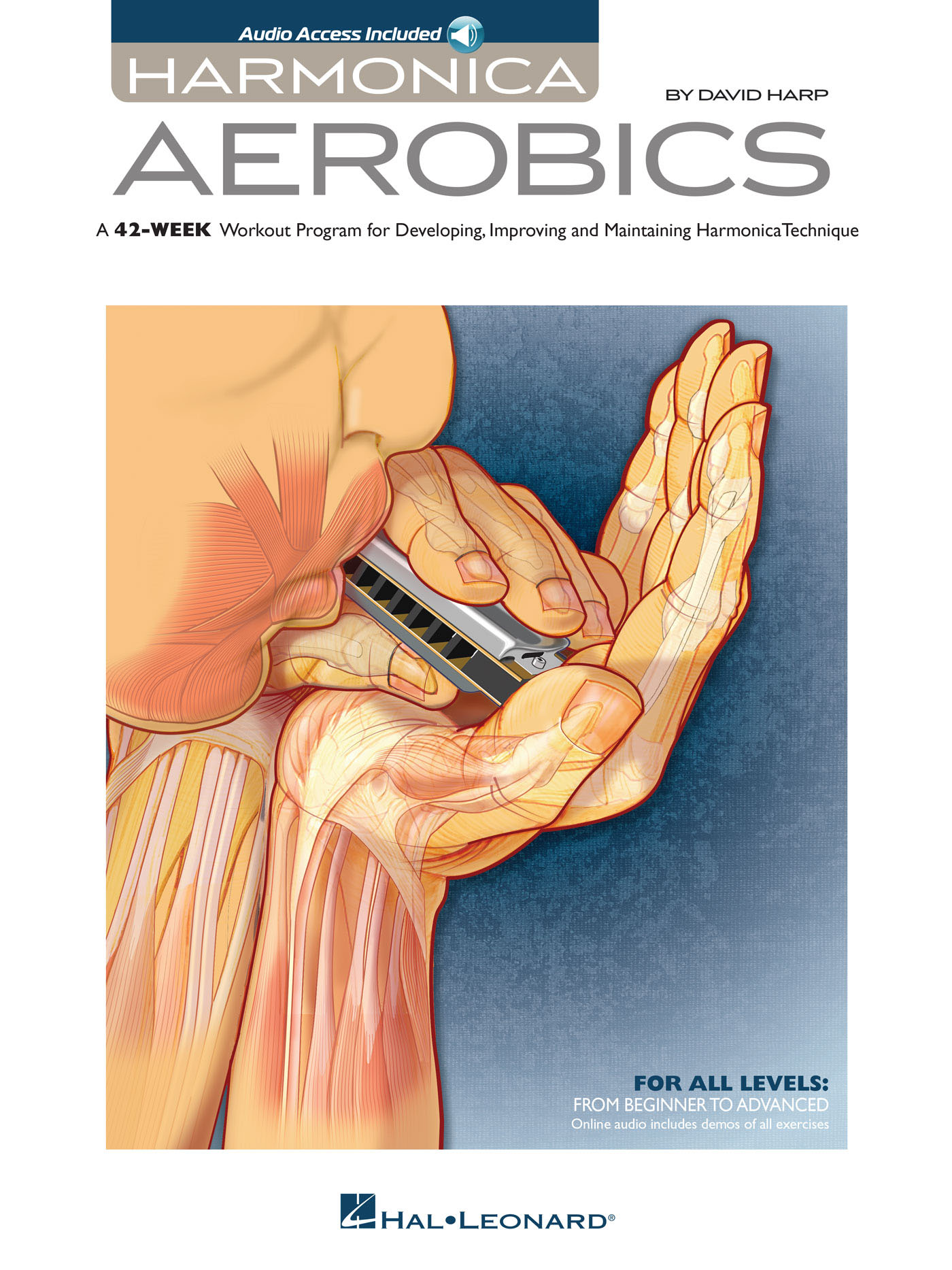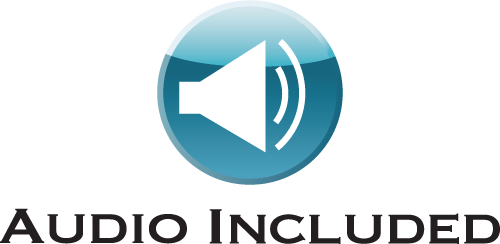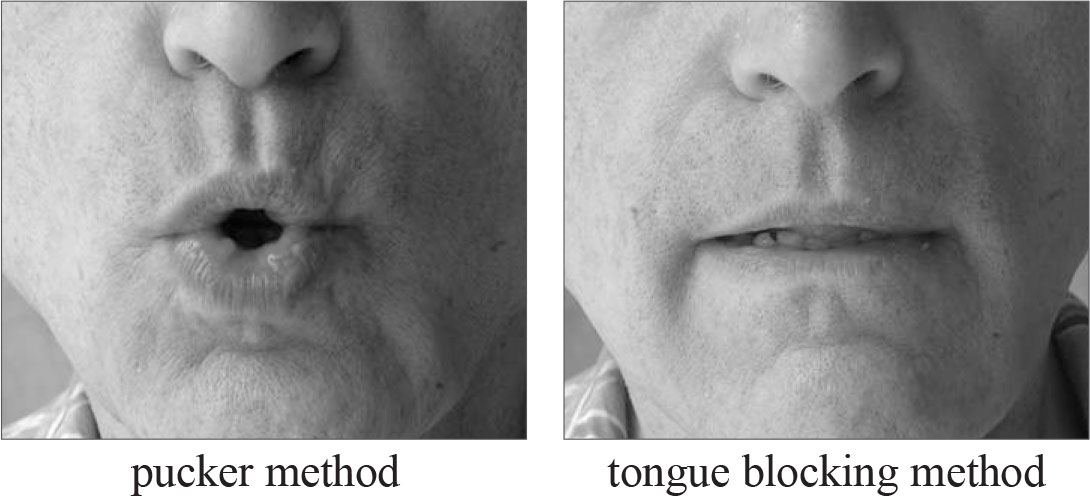The functionality of the audio in this eBook may differ depending on your device.
Also included are the complete audio files available for
streaming or downloading using the unique web address below.
www.halleonard.com/mylibrary
3774-9095-8582-6171

7777 W. Bluemound Rd. P.O. Box 13819 Milwaukee, WI 53213
In Australia Contact:
Hal Leonard Australia Pty. Ltd.
4 Lentara Court
Cheltenham, Victoria, 3192 Australia
Copyright 2017 by HAL LEONARD LLC
International Copyright Secured All Rights Reserved
No part of this publication may be reproduced in any form
or by any means without the prior written permission of the Publisher.
Visit Hal Leonard Online at
www.halleonard.com
This book is dedicated to my friend Paul Van Stavern,
who turned me on to blues and rock harmonica. Without his gift
of a J. Geils record yes, it was that long ago and a Sonny Boy
Williamson #1 record, I would still be playing Taps and a few
folk songs. Or, more likely, I would have given up the
harmonica before I knew what it was made for.
In addition, I would like to thank the Reverend Ardys Van Stavern
and the late Alice G. Gene Van Stavern of Wisconsin for so
generously providing me with one of my dearest friends.
INTRODUCTION
What Harmonica Should I Use?
This method has been created for use with two different standard ten-hole harmonicas. These are also known as diatonic, Richter-tuned, or blues harps and come in a wide range of models and prices. The two different harmonicas youll need are a relatively low-tuned key of A harp and a mid-range key of C harmonica. Most of the earlier material in the book is for the key of C harmonica, since thats the key most players are likely to have already. Later material, featuring the technique known as blow bending, will be demonstrated on the A harp.
How to Use This Book
Some of us like to get our information through reading, some from hearing, and some from a combination of the two. You know what works best for you, so youll soon discover your own balance between listening to the exercises on the accompanying audio tracks and reading about them (including the notation) in the book. Your current level of playing, your ability to bend notes, and your ability to read standard music notation all play into this. However, once you have the hang of using Harmonica Aerobics, you can deploy it the way that feels right to you.
As soon as you begin using this method, listen to the solos section (Weeks 3342). These examples are intended to demonstrate a variety of ways to approach a particular style of blues, rock, country, or jazz music. Hearing, for example, the 16-verse solo based on the funk/rock two-bar chord structure youll learn to play in Week 1 will help you create solos of your own.
What follows here are some chunks of important information you may need, depending on what you already know. Read or at least skim the parts that apply to you.
If You Cant Read Standard Music Notation
Although you can learn the timing of the exercises from listening to the audio, taking a moment to understand the different note symbols used to indicate rhythmic values will speed your progress. (See page 89.) If you cant read music, no matter your level of harp expertise, start with the beginning exercises. The rhythms of these early etudes are simple (they use only single-beat notes called quarter notes) and will make learning the notation easy.
Additionally, harmonica tablature a simple arrow-and-number notation system showing which hole to breathe in or out on, and when and how much to bend notes is written beneath each line of standard music notation. Its described on page 94 of this book. Its okay to read only the harp tablature for each exercise while you listen to the audio demonstration, if that works better for you.
For Complete Beginners
Are you a complete beginner? If you dont know how to hold your harmonica and are not able to breathe in and out to play at least a few simple blues or rock riffs (combinations of notes you like and memorize), try my 3 Minutes to Blues , Rock & Folk Harmonica book/audio (Hal Leonard, HL14036996) before reading further. An hour spent with that package will save you many hours and youd rather play blues and rock harp than play catchup. (Of course, if youve already bought this book and, especially if you are able to read standard musical notation and harmonica tablature, go ahead and give it a try.)
About Playing Single Notes and Chords
Some early exercises can be played using chords. A chord is a sound made by playing more than one note usually two or three notes, on the harmonica at the same time. Its easy to do on the harp just by keeping your mouth open wide while you play. Whats harder, for beginners, is to get single notes. There are two main ways to do this:
With the pucker method , we make a small hole with our mouth, almost as though we were whistling. With the tongue blocking method , we cover four holes with our mouth and block the three higher holes with the front and side of our tongue. I believe that puckerers find it easier to bend and tongue blockers find it easier to use the advanced tone technique known as octave blocking. Some players say tongue blocking produces better tone, but respiratory system control has more to do with tone than how one gets single notes.
Bending Notes
After learning to get single notes, bending is the most important (and difficult) harmonica technique. To bend a note, we create a specific tongue position while playing that note usually on either the draw notes from holes number 1 through 6 or the blow notes from holes number 8, 9, and 10. The simplest bends will commence in Week 12. This means the earlier exercises wont sound as interesting or bluesy as the later ones but those who cant bend yet will be able to use them. More advanced players who dont know much theory will also find important information in them (although presented in the form of exercises that are simple, technique-wise). To learn a little more about bending, visit BendingTheBlues.com or HarmonicaNoteBending.com.
Music Theory
A band often cringes when a harp player comes up to the stage and wants to sit in, because harmonica folk are frequently stereotyped as not knowing music theory. Unfortunately, this is sometimes true, since many are self-taught. And its not that hard to learn to play some blues and rock harp especially when you are playing by yourself without knowing any theory at all. So what? Well, jump up onstage and start playing your harp in the wrong key and youll soon find out. If youre lucky, youll be booed off the stage booted off, if youre not! This is not a theory book, but youll find a few helpful bits of theory instruction along with the exercises as well as one crucial chart (see page 93) that will keep you from ending up in the bad situation just described. If youd like to be better versed in this subject, try my popular book Music Theory Made Easy (Hal Leonard, HL14022398). And knowing just enough theory will help you improvise i.e., create your own original harp music spontaneously.

